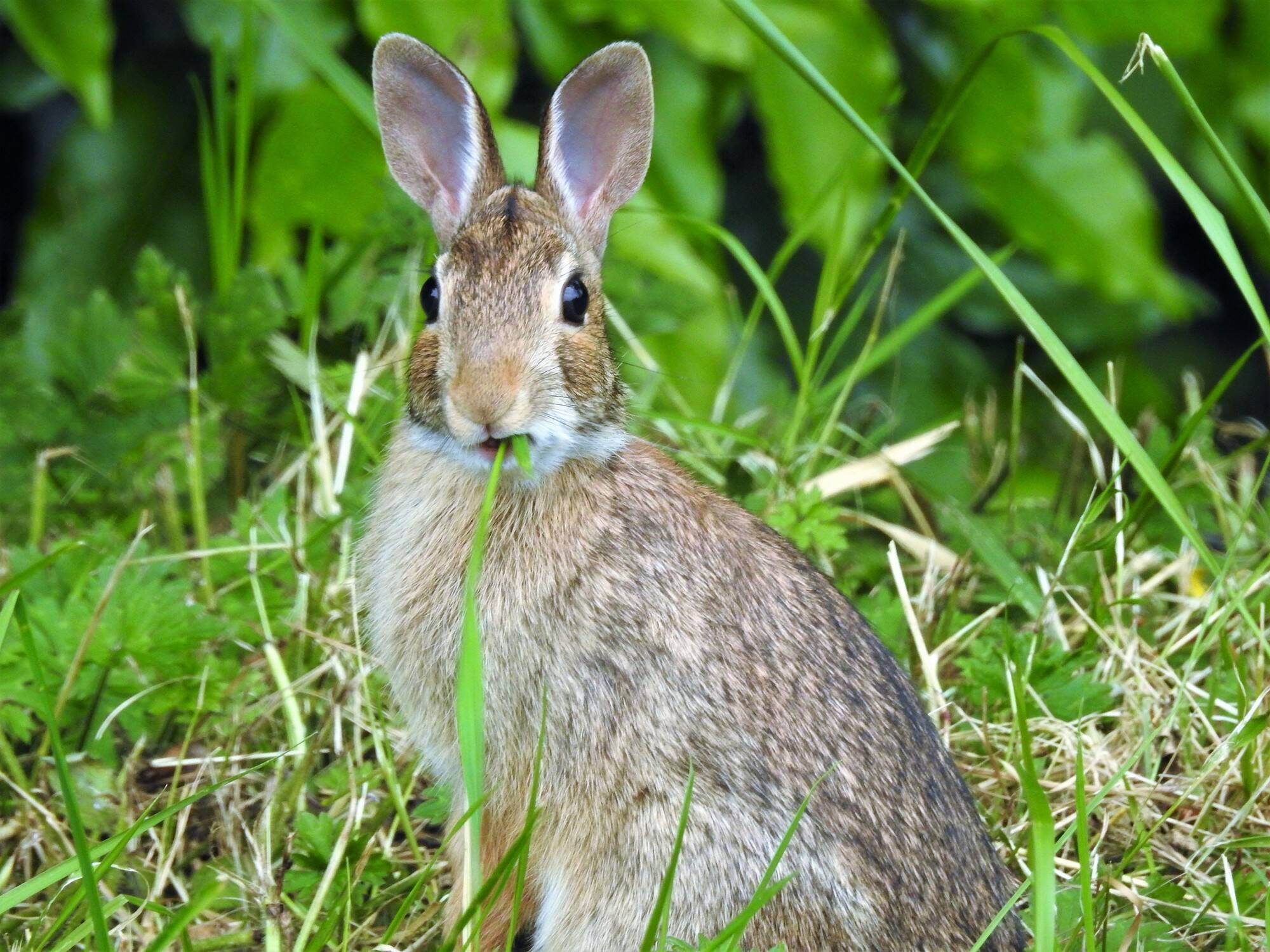The first and only wild cottontail rabbit in the state to test positive for a hemorrhagic disease was found on Whidbey Island this month, the Department of Fish and Wildlife reported.
The state is conducting whole genomic sequencing of both a feral domestic rabbit and the wild rabbit that was diagnosed with the disease, known as rabbit hemorrhagic disease virus type 2.
Kurt Licence, a biologist with Fish and Wildlife, explained that the DNA testing will help experts understand if the disease is the same strain that’s devastated populations in other states and give them a better idea what the future holds for the Whidbey bunnies.
Licence said the transmission of the disease to a wild rabbit is a worrying sign, although biologists don’t know for sure if other cottontails were infected. He said the feral and wild populations remain separate — and aren’t known for cross-canoodling — but they may be drawn together if people are feeding them.
The highly contagious disease devastated the population of the well-known feral rabbits in Langley last month. The rabbits, which descended from released pet rabbits, were once so common in the city that they inspired the Bunny Daze event.
Now, seeing one has become something of a rare occurrence. Langley Mayor Scott Chaplin said he hasn’t seen one in a week. Gail LaVassar, executive director of the South Whidbey Community Center, said she has seen only one in recent weeks. The fairgrounds, which was the epicenter of the disease, remain under state quarantine and rabbits aren’t allowed at the Whidbey Island Fair, which begins Thursday.
The rabbit die-off is mostly over. The special containers for the rabbit bodies were removed Monday, according to Chaplin. Island County set up the 96-gallon garbage containers in two areas in Langley last month.
County Public Health and the Solid Waste Department reached out to state and federal agencies to figure out the best way to deal with the infected bodies. Residents were asked to double-bag the carcasses. Island Disposal Site Manager Andrew Riggs said that employees picked up containers two or three times a week, according to a statement from Island County.
“We bypass the transfer station tip floor and keep the diseased rabbits contained until they are in an intermodal container destined for the landfill,” Riggs said in the statement.
Two state agencies are now involved in monitoring rabbits on Whidbey. The state Department of Agriculture responded initially because the infected rabbits were all non-native domestic breeds. The Washington Department of Fish and Wildlife is now involved because the wild rabbit was infected.
Fish and Wildlife reported that a landowner near Langley turned over an infected eastern cottontail on July 6. The rabbit was tested by both the Washington Animal Disease Diagnostic Laboratory at Washington State University and the U.S. Department of Agriculture’s National Veterinary Services Laboratories.
Both state agencies will continue to monitor rabbits on Whidbey Island and educate people about ways to avoid spreading the disease. Washington State Veterinarian Amber Itle noted “the long tradition of people releasing pet rabbits there from unknown origins” at the fairgrounds and urged people to end the practice.
Likewise, Fish and Wildlife urges people not to move their pet bunnies off the island and never release pets into the environment. Licence said biologists are especially concerned about the possibility of the disease spreading to susceptible rabbit populations, like pygmy rabbits, elsewhere in the state.
“Since this disease is transmitted through direct contact or contact with rabbit body fluids, it is critical to avoid concentrating and moving rabbits,” he said. “This includes feeding and providing water for wild rabbits as well as transporting rabbits and uncleaned materials like clothing that have been potentially contaminated with body fluids.”



